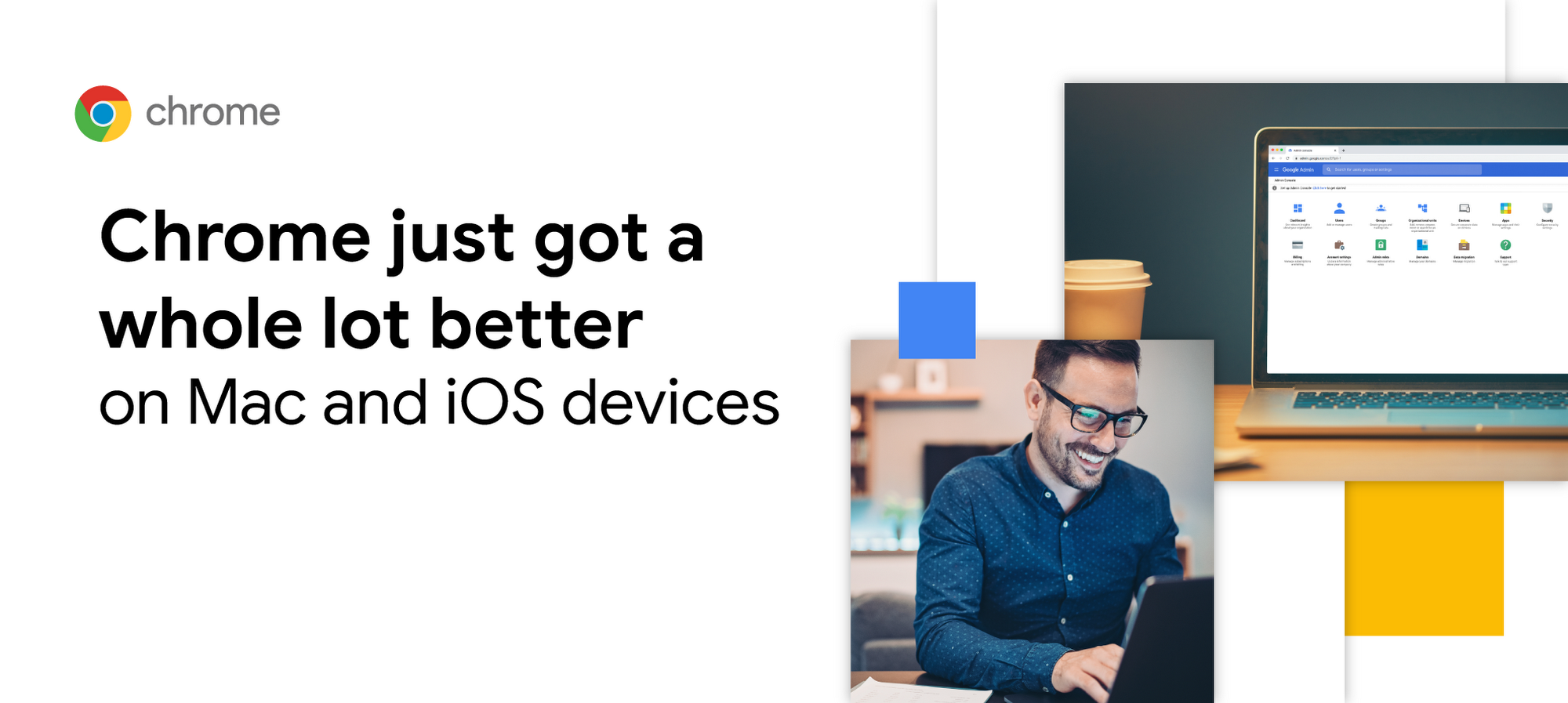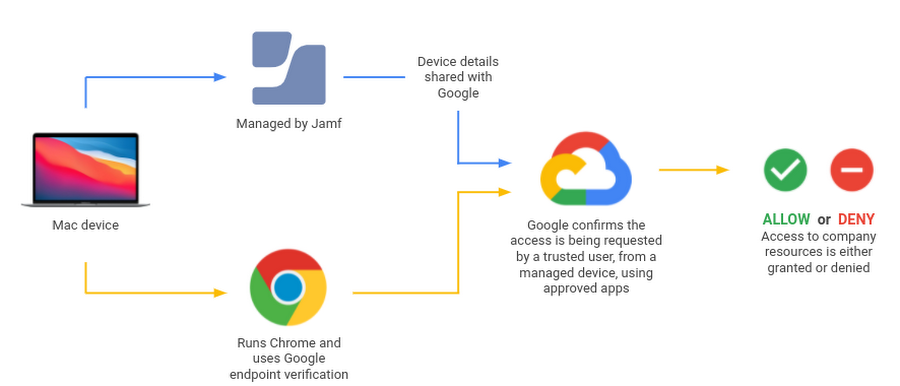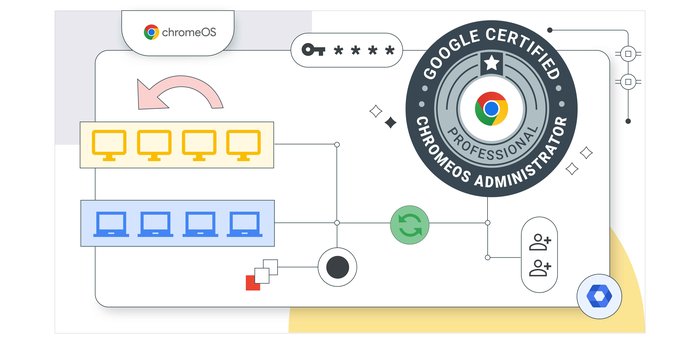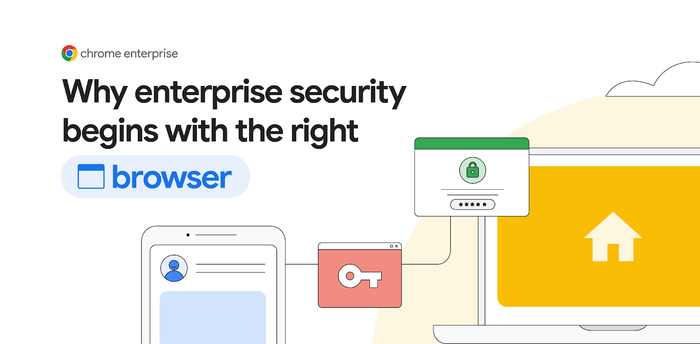Advancing security, management and employee productivity with Google and Jamf

Philippe Rivard
Group Product Manager, Chrome Enterprise
Learn more about Chrome Browser Cloud Management
Powerful and flexible management capabilities both in the cloud and on premises, at no additional cost.
Learn moreLast week Parisa Tabriz, Head of Chrome Engineering, Product and Design, shared some exciting updates at the Jamf Nation User Conference. She covered a few topics that are key to helping organizations navigate the workplace transformations that are occuring as a result of the pandemic. In this post, I’ll cover some of my team’s work to help enterprise end users, and their IT administrators, navigate this transformation with Chrome.
Pre-pandemic, about 5% of Americans spent their working time at home. By spring of 2020, this figure jumped up to 60%.* At Google, most of our workforce had to make the quick shift to working remotely.
Now, as things slowly return to a new normal, companies must be ready to support their workforce no matter where they’re working. But hybrid work brings its own challenges for IT teams, who are responsible for ensuring their enterprise’s productivity, while upholding device management and security best practices. Let’s dive into how Chrome can help.
New productivity features
Over the last few months, Chrome added several new features that make it easier to get work done in the browser. I use them frequently at work – your teams may find them helpful as well!
The first is tab search, which allows you to search for a specific tab in your list of tabs. Second, with tab groups, you can group tabs by theme or topic and even assign a color to them, making it easier than ever to keep your tabs in order. And now, tab groups are preserved across browser sessions, making it even easier for you to pick up where you left off.
Chrome’s page sharing features make it easy for users to share their current page, including the ability to send the current page to their devices, or get a QR code for the current URL. This is especially helpful while folks are working remotely. Admins can also control whether this feature is available to end users using an enterprise policy.
And of course, we continued working on enhancements to performance and security. This year, we started The Fast and The Curious blog series to share the progress we’re making on these important topics. It’s a great way to see what we’re doing to bring you more battery life, and a faster browsing experience.
Management enhancements for Mac and mobile
Chrome gives admins simple and efficient management options, and provides several security controls that make it easy for enterprises to take a proactive stance on security.
Earlier this year, we launched PKG installers for the Mac that make it even easier to deploy Chrome to your business users.
Chrome Browser Cloud Management gives IT teams a simple solution to manage their Chrome deployments, centrally from the cloud. IT teams love it because you can easily get insight into your browser fleet, set policies and manage extensions.


All of the benefits you get from Chrome Browser Cloud Management for Mac are now available for iOS as well!
You can also use Jamf Pro to easily deploy and customize Chrome, using the PKG installer I mentioned earlier. As of August 2021, you can deploy Chrome policies to your macOS, iOS and iPadOS devices directly from the Jamf Pro console, as well as the Google Admin Console.
Improving security measures with BeyondCorp Enterprise
Finally, let’s talk about security.
BeyondCorp Enterprise, Google Cloud’s zero trust solution, is delivered through Chrome and provides organizations with secure access to applications and cloud resources. It also protects enterprises against data loss and checks for malware and phishing in real time. This browser-based layer of security is especially helpful in a hybrid work environment.
At JNUC, we announced an integration between BeyondCorp Enterprise and Jamf Pro that incorporates device information into access policies.
Here’s how it works. Activating the Jamf Pro integration provides additional device security information that is useful during access requests to BeyondCorp Enterprise. Admins can then configure BeyondCorp Enterprise policies to include this information in context-aware access decisions. This provides them with more signals to determine if a device is compliant, and they can use these when setting rules to either grant or deny access.


This integration is currently in preview, but is set to be generally available by early 2022. It’s powered in part by Chrome Extensions, so administrators implementing this will also want to look at our policy controls for extensions management.
If you’re interested in learning more about Chrome and Jamf, check out the JNUC session from Alex Bauer, Chrome Customer Engineer or watch the keynote session on demand. And stay up to date on the latest from Chrome by registering for our enterprise release notes.



